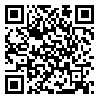دوره 10، شماره 3 - ( 1-1404 )
جلد 10 شماره 3 صفحات 236-227 |
برگشت به فهرست نسخه ها
Download citation:
BibTeX | RIS | EndNote | Medlars | ProCite | Reference Manager | RefWorks
Send citation to:



BibTeX | RIS | EndNote | Medlars | ProCite | Reference Manager | RefWorks
Send citation to:
Purnomo E, Hamid A Y S, Gayatri D, Setiawan A. Functions and Obstacles of Nurse Leadership in Disaster Management in West Sulawesi, Indonesia: A Qualitative Study. Health in Emergencies and Disasters Quarterly 2025; 10 (3) :227-236
URL: http://hdq.uswr.ac.ir/article-1-639-fa.html
URL: http://hdq.uswr.ac.ir/article-1-639-fa.html
Functions and Obstacles of Nurse Leadership in Disaster Management in West Sulawesi, Indonesia: A Qualitative Study. فصلنامه سلامت در حوادث و بلایا. 1404; 10 (3) :227-236
چکیده: (2252 مشاهده)
Background: Amidst situational uncertainty and potential disaster, adaptive and visionary nursing leadership is needed to design contingency strategies to coordinate prompt emergency response across levels. However, nurses’ leadership during disaster management has remained unclear. This study explores nurse leadership’s functions and obstacles during disasters.
Materials and Methods: This qualitative research employed a phenomenological approach. We selected 32 nurses using purposive sampling from four health centers in West Sulawesi, Indonesia. Data were collected through focus group discussions (FGDs) and analyzed using the content analysis method.
Results: The analysis identified 4 primary categories and 9 subcategories: 1) Personnel direction function (providing instructions and directions, motivating and empowering members), 2) Staffing function (availability of human resources, addition and development of human resources), 3) Conflict of functions in family and profession (role and responsibilities in family, demands of the profession), 4) Advocacy, coordination, and communication functions (cross-sectoral advocacy, inter-institutional synchronization, and communication channels and media).
Conclusion: Determining the functions and obstacles of nurse leadership in disaster management is crucial to knowing the function of direction, staffing, balancing family and professional roles, and improving coordination, communication, and advocacy functions. Our findings can be used to develop training models and government policy recommendations to support nurse leaders during disasters.
Materials and Methods: This qualitative research employed a phenomenological approach. We selected 32 nurses using purposive sampling from four health centers in West Sulawesi, Indonesia. Data were collected through focus group discussions (FGDs) and analyzed using the content analysis method.
Results: The analysis identified 4 primary categories and 9 subcategories: 1) Personnel direction function (providing instructions and directions, motivating and empowering members), 2) Staffing function (availability of human resources, addition and development of human resources), 3) Conflict of functions in family and profession (role and responsibilities in family, demands of the profession), 4) Advocacy, coordination, and communication functions (cross-sectoral advocacy, inter-institutional synchronization, and communication channels and media).
Conclusion: Determining the functions and obstacles of nurse leadership in disaster management is crucial to knowing the function of direction, staffing, balancing family and professional roles, and improving coordination, communication, and advocacy functions. Our findings can be used to develop training models and government policy recommendations to support nurse leaders during disasters.
| بازنشر اطلاعات | |
 |
این مقاله تحت شرایط Creative Commons Attribution-NonCommercial 4.0 International License قابل بازنشر است. |





